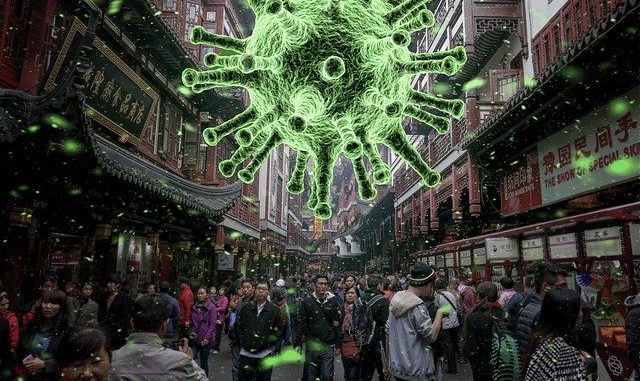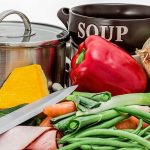
Cases of coronavirus disease or COVID-19 as it is also called, continue to be announced on a daily basis in the United Kingdom, Europe and the USA, and the rest of the world. It is something completely new and the medical profession and the general public are having to adapt and learn about it on an almost daily basis.
Before we continue just look at some of the excellent advice and current knowledge about the virus. These are the web-site to look at:-
Take a look at the NHS website on the coronavirus called Covid-19 and also the WHO web-site which gives more global information.
The pandemic was declared by the World Health Organisation (WHO) on the 11th March 2020. The virus was found to be widespread and could pass easily through human to human transmission. Virtually all countries have been affected.
The Virus
The technical name for this virus is Severe Acute Respiratory Coronavirus 2 (SARS-CoV-2) and it causes COVID-19 or coronavirus disease.
It is a new virus to contend with. The first cases were recorded in people suffering pneumonia in Wuhan, China in the latter part of December 2019. It is first thought to have been caught from animals but clearly spreads between people.
If you follow some basic steps of hygiene it should be possible to reduce the risk to yourself and to others, especially when the community you live in is affected.
How Does COVID-19 Spread?
It is now established that people are infected by others when in close contact with each other. Droplet infection is the most likely route – sneezing, coughing and even talking is enough to allow the virus to be shed and passed into the atmosphere.
People who are in close contact become infected when droplets containing the virus enter the nose, mouth and eyes. Droplets can also enter by inhalation.
Touching contaminated objects containing droplets of virus can also infect if you then touch the face especially the nose, eyes and mouth.
People with no symptoms or the barest signs of the virus are infective. These are called people with asymptomatic symptoms.
What Are The Symptoms?
From the outset, many of the symptoms are similar to other infections but there are two which appear to be the most common and defining of the disease.
The earliest known symptoms are usually extreme fatigue and tiredness, and headaches.
The defining symptoms are in most cases a fever and a dry cough. Perhaps the most unusual and one of the defining symptoms is loss of taste and smell.
Other symptoms do include sore throat and shortness of breath but these are not as common. Other less common symptoms also include muscle aches, a stuffed and runny nose, rashes and if the virus enters the digestive tract (gut), diarrhoea.
Some people have no symptoms whatsoever but most of those infected will certainly have the milder forms. Unfortunately for about 5% at least, the illness is much more severe and can be fatal.
The symptoms can begin even after one day after infection but most people develop them after five or six days. It can take up to 14 days for these symptoms to appear which is why isolation for two weeks is recommended in suspected cases.
Long COVID is the condition when severe symptoms persist for a number of months and in rarer cases have continued since the infection was first known about.
Fortunately, most patients will recover in two weeks
What Is The Diagnosis And Treatment?
The symptoms are very similar to many other respiratory diseases. The only means of diagnosis are to take nose or throat swabs or a blood test
At the moment there is no recognised cure.
If mild symptoms are experienced, treatments to lower the temperature from the fever or to relive pain are recommended. When the treatments are more severe, it means hospitalization.
Prevention: Reducing The Spread Of Infection
The key hygiene behaviours are:-
- Wear a face mask such as a cloth to cover the nose and mouth especially in public
- Wash your hands on a regular basis, keep them clean
- Keep your distance from those who are sick. The general rule is to maintain a 2 metre distance at all times whoever the person is. Close contact in the presence of someone who is shedding the virus for more than 15 minutes is considered to be a high risk situation.
- Ensure you have adequate supplies of medicines, alcoholic based wipes and sanitisers, and soap.
- Use the alcohol-based hand sanitiser when soap and water are unavailable.
- Cover sneezes and coughs. Avoid using hands. Use a tissue or upper sleeve. Throw the tissue in the bin and immediately wash hands.
- If symptoms are mild, stay isolated at home. Always seek medical advice and observe restrictions based on local and national advice.
- Prepare the family, consider what you would do if you have to self-isolate and what the other members of your family will need to do
- Is that vacation or business trip absolutely necessary? Just consider if it is worth the risk.
Testing of people is likely to increase almost exponentially as the number of cases rises throughout the world. The key is not to panic but remain calm and rational about your responses. The outbreak is certainly serious but the vast majority will not become seriously ill with this type of flu. A small percentage will need intensive care and those who are most susceptible will need to extra extra precautions. If we are well or infected but not at risk, we should ensure we do not increase the risk for others, especially the more vulnerable.
Hand Washing
A very important activity, perhaps the most important act of cleanliness we can do. It doesn’t really matter if you wash those hands twenty times a day, it is not unreasonable given the nature of this virus’ transmission. Most web-sites have put up information on the scientific way of cleaning the hands.
Wet your hands with clean running water and then lather them with soap; don’t miss the backs of your hands, between your fingers or under your nails. Make sure to scrub for at least 20 seconds (or about the time it takes to sing “Happy Birthday” twice), and dry them with a clean towel or let them air dry.
Use the alcohol-based hand sanitizers. These need to be rubbed in for just under 20 seconds. the gel must have at least 60 per cent alcohol (ethanol). The alcohol most probably damages the fats that are on the surface of the virus which renders it inoperable.
The most difficult bit is to avoid touching the face, especially the nose, mouth and eyes with those unwashed hands. That remains the most difficult element but it is possible if you make it a habit. It might even cure some of us of our nail-biting or hair-eating habits !
Try to stay over 6 feet away from anyone showing symptoms. Admittedly it might be a cold that they have but even so. No handshakes if possible.
If you have to sneeze, do so into the crook of the elbow to avoid germs on the hands.
Facemasks are now considered to be very effective at reducing the spread of infection.
Medicines
If you rely on a medicine on a permanent basis, then ensure you have 30 days worth. Don’t forget your pet either – they often rely on prescription medicines too.
The vaccine for immunization against coronavirus is probably a year away and immunization against other flu will not help at this moment.
Preparing The Family For The Presence of Coronavirus
Just ensure every member of the family is up to speed on emergency plans including hospital numbers, locations of hospitals etc.
If you have children at school, then there is every chance that some point they have to be at home. That means being ready and alert to any changes that take place. Likewise, think about what you will do with elderly parents and relatives. You need a plan for caring for them without compromising yourself and others that associate with.
What symptoms should I look out for?
Symptoms, which can take between two to 14 days to appear, include fever, cough and difficulty breathing or shortness of breath. Milder cases may resemble the flu or a bad cold, but people may be able to pass on the virus even before they develop symptoms.
The virus causes pneumonia in extreme cases.
Think about whether immunization against bacterial pneumonia is worth pursuing. It is the most serious likely outcome if you contract coronavirus but not the only issue. In the most severe cases, organ failure results because oxygen is unable to pass from the lungs into the bloodstream. As it is a viral pneumonia that is sometime cases, no antiviral works against it because they are currently designed against seasonal flu.
All those who have died were already in poor health.
Should I visit The doctor/physician with a cough ?
In the UK, the current medical advice is that if you have travelled recently from areas affected by coronavirus then you should:
- stay indoors
- avoid contact with others as you would if you had other types of flu
- call NHS 111 to inform them of any recent travel to an area.
Products
We have been keen to ensure that products which are essential if not extremely helpful are referenced in this article. Our main shopping page will help you access many of these and we hope you are able to avail yourself of them. We have created a Covid-19 section which includes face masks, hand sanitisers (individual and bulk), face shields, tissues, disinfectants etc.
The information contained in this article is for educational and informational purposes only and is not intended as health or medical advice. Always consult a physician or other qualified health provider regarding any questions you may have about a medical condition or health objectives.
Please note this page contains links to our affiliate marketing partners. Please read our affiliate disclosure.
Revised 29th September 2020 – additional information about symptoms, hygiene precautions. Next revision will include wearing of facemasks



Leave a Reply